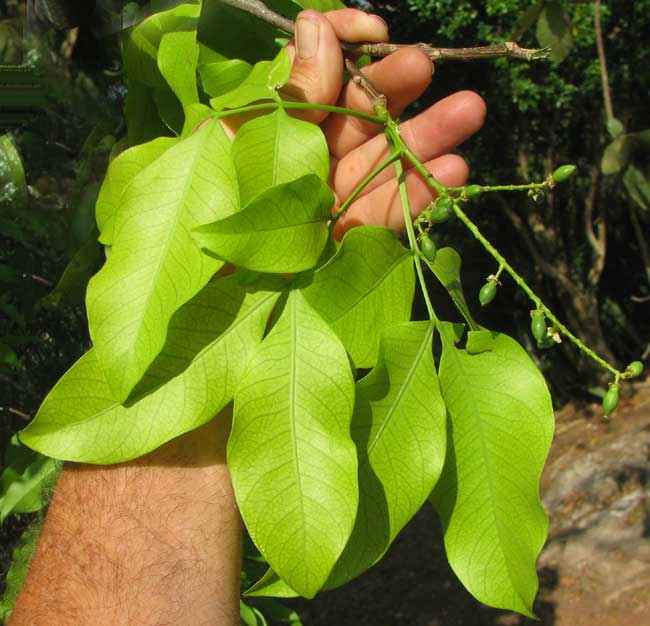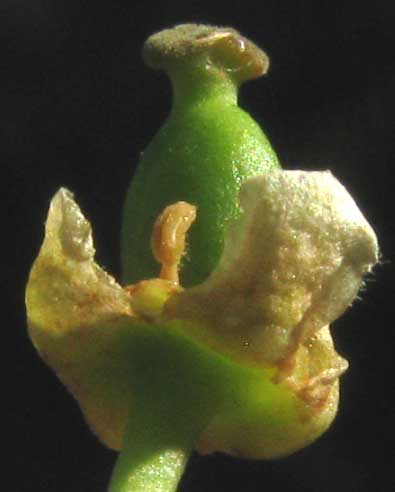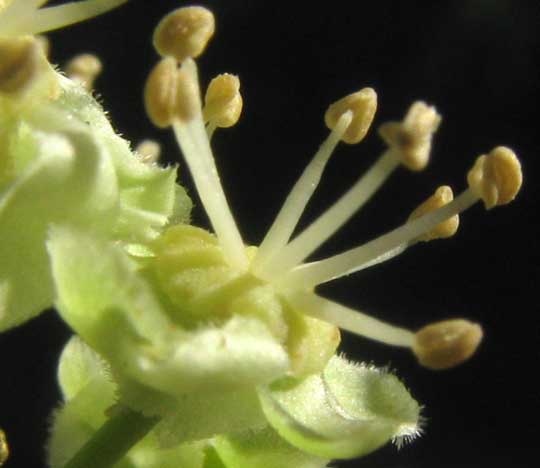Excerpts from Jim Conrad's
Naturalist Newsletter

from the April 3, 2011 Newsletter issued from Hacienda Chichen Resort beside Chichén Itzá Ruins, central Yucatán, MÉXICO; limestone bedrock, elevation ~39m (~128ft), ~N20.676°, ~W88.569°
WILD GUAYA FLOWERING
Maybe you remember the sweet, juicy Guaya fruits that last July were being sold along the road and in the street market. Our page all about them is at www.backyardnature.net/yucatan/guaya.htm.
Back then we said that those Guaya fruits were produced by a much-planted South American member of the Soapberry Family, the Sapindaceae, Melicoccus bijugatus, but that there was another tree, also called Guaya, of the same family, and producing similar but smaller edible fruits. Now that "Wild Guaya," TALISIA OLIVIFORMIS, is flowering, as shown above.
Note the distinctive compound leaves consisting of four leaflets.
Actually, the above picture shows a branch-tip, flowering panicle a bit past its prime. By the time I noticed the flowering, it was almost over. The green, oval items are ovaries on their ways to becoming Guaya fruits, the flowers' white petals and stamens having already fallen off.
You can see a younger flower with a much smaller ovary and its white petals and a stamen still attached below:

In that picture, the male, pollen-producing stamen is at the center, between two white petals beginning to fade. A strictly male flower with no ovary is shown below:

That picture shows eight stamens arising from a "disk." Such disks ae very typical of flowers of the Soapberry and a few other families.
So, Wild Guaya trees definitely produce unisexual male flowers, and if that stamen in the center of the previous picture produced viable pollen, then also bisexual or "hermaphroditic" flowers are produced. Plants bearing both unisexual and bisexual flowers are said to be polygamous.
I hope I can taste the Wild Guaya's fruits before the critters eat them all. If they're half as good as those of the planted Guaya, they'll be worth waiting for.